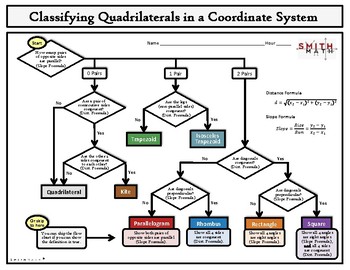

A square is a rectangle in which all four sides are equal in length. You can print these puzzle pieces on colored cardstock. Classifying Quadrilaterals A rectangle is a parallelogram that contains four 90 angles. Using flashcards or a matching puzzle is a great way to give students a chance to practice on their own, at their own pace. Individual practice is another great way to help students in mastering quadrilaterals.

There are two main types: concave and convex. Most of the tips I’ve shared involve whole class or small group activities. Designate the best name for a given quadrilateral. Use the theorem of quadrilaterals to find angle measures. A quadrilateral is defined as a two-dimensional shape with four sides, four vertices, and four angles. Determine which shapes are and are not quadrilaterals, given examples.There are 24 practice slides + a set of answer slides.There are 4 sets, including:- 6 slides for identifying angles in triangles- 6 slides for classifying triangles- 6 slides for classifying quadrilaterals. Decide if the figure is regular, irregular, convex, or concave. These digital math activities give 4th grade students a fun way to practice classifying triangles and quadrilaterals.The flow or family chart clearly states the relationship between the quadrilaterals along with their properties to help 5th grade and 6th grade learning. Determine its name by counting the number of sides. Watch Sal classify a quadrilateral as a square, rhombus, rectangle, parallelogram, or trapezoid given its four vertices. This properties-of-quadrilaterals anchor chart presents the name, shape and properties of each quadrilateral in a colorful graphic organizer.Use this with any third grade classroom or as a review for fourth or fifth grade. This set is an in-depth way to learn the properties of a square, rectangle, rhombus, trapezoid, and parallelogram. Included here are adequate exercises to gain an in-depth knowledge of various quadrilaterals like squares, rectangles, parallelograms, trapezoids, rhombuses and kites. These classifying quadrilaterals worksheets support students’ understanding of identifying the different types of quadrilaterals. And if we know that the sum of the interior angles in a triangle is 180 degrees, if we add these two triangles together we get 360! Walk through this batch of quadrilaterals worksheets, meticulously drafted for students of kindergarten through high-school. Latter worksheets introduce 3D shapes.And just like there are some incredible properties about triangles, there are some important theorems and properties regarding quadrilaterals.Īs in a triangle, quadrilaterals have both interior and exterior angles, and the sum of the interior angles in any quadrilateral is 360 degrees!īecause we can create two triangles from any quadrilateral by forming a diagonal. Area and perimeters, classification of angles, and plotting on coordinate grids are also covered.

Our geometry worksheets start with introducing the basic shapes through drawing and coloring exercises and progress through the classification and properties of 2D shapes including quadrilaterals, triangles, circles, and polygons. If youre looking for a more specific game for classifying quadrilaterals, the Classifying Quadrilaterals game focuses on identifying trapezoids, rhombuses.


 0 kommentar(er)
0 kommentar(er)
